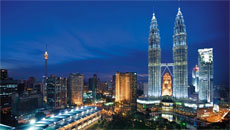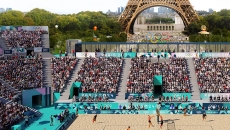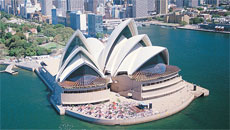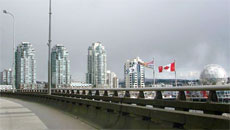It is hard to believe that a small nation located on a craggy island in northwestern Europe has been the seat of many powerful kingdoms and once controlled an empire that stretched the globe. As whispers of bygone eras echo through the magnificent ruins, restored palaces, cobblestone streets, and cherished institutions of Great Britain, one specific period of the nation’s storied past stands out in terms of wealth, grandeur and its wide reaching effects. While much has been written about the imprints left by British colonial rule known as the “British Raj” on the Indian subcontinent it also cannot be denied that British landscape and culture in return has been and continues to be greatly influenced by South Asians.
Steeped in centuries of history and tradition, Great Britain can rightfully boast about being home to thousands of monuments and areas of interest. Since it would take a lifetime to explore every single heritage site, an intriguing option for any itinerary is a day tour that provides travellers with a fascinating glimpse into the decadent years of the British Raj and how the migration of Indian, Pakistani, and Bangladeshi settlers has helped to reshape British identity.
It can be safely argued that the continuously evolving relationship between South Asia and Britain had its roots deep in the heart of London’s present day financial district, known as “the City”. On the corner of Leadenhall and Lime Streets stands an impressive piece of modern architecture. The “inside-out” building with its elevators, pipes, and ducts located on the exterior, is the home of Lloyd’s of London, the world’s most famous insurance company. Not many, however, are aware of the significance of this site well before Lloyd’s was built. And curiously, in a city that is brimming with monuments, there is no monument or even a plaque here that commemorates the headquarters of the world’s first truly global corporation.
The British East India Company once stood at this location and ruled over one-fifth of the world’s population with the Indian subcontinent as the source of its immense wealth. Originally a modest spice trade business with several outposts in Asia, the East India Company took advantage of the Mughal Empire’s decline and captured territory in India in 1757.
The Company ruled India for a hundred years in a manner that was increasingly exploitative and ruthlessly oppressive as Indian tea, spices, and cotton flowed into Europe. A common expression among scholars is that “the British East India Company found India wealthy and left it poor.” The Indian Mutiny of 1857 forced the British Crown to abolish the East India Company and take control of India; thus ending the “Company Raj” and paving the way for the “British Raj” under Queen Victoria. The Company headquarters on Leadenhall Street was demolished and perhaps as a result of its dark legacy, no marker exists as a reminder of the once powerful corporation.
From Leadenhall Street take an interesting side trip through the 700 hundred year old Leadenhall Market, an upscale covered market, which stands above the site where the Romans first founded the city of “Londinium”. After the detour, walk along nearby Fenchurch Street towards Mincing Lane, notable for being the center of the tea and spice trade during colonial times. Further ahead, one can stop for a meal at what is probably the only remaining link to the East India Company’s influence in the area – the East India Arms Pub. After some well-deserved nourishment head for the Thames, located only a short distance away, where you will find the notorious Tower of London.

Among the many treasures and secrets closely guarded by the Tower’s fortified walls lies the most striking and contentious symbol of British dominion over South Asia. The Kohinoor Diamond was taken out of India when the British annexed Punjab and was presented as a gift to Queen Victoria by the East India Company. Originally weighing a massive 186 carats, Prince Albert had the diamond cut to 105 carats in order to increase its brilliance. Centuries-old legends and myths surround the gem as it has passed through many hands including the long line of Mughal Emperors, Persian invaders, and Afghan kings before coming into the possession of Maharaja Ranjit Singh, the ruler of Punjab, whose young son was forced to surrender it to the British.
A widely held superstition says that the Kohinoor brings misfortune to any male owner and good fortune to any female owner. Despite India, Pakistan, and Afghanistan laying claim to the diamond, it continues to be a part of the British Crown Jewels, which are on display at Jewel House at the Tower of London.
Migrants from the Indian subcontinent began arriving in Britain during the 17th century. Bengali sailors or “Lascars”, employed by the East India Company, were among the first arrivals and many settled near Brick Lane, located just a few transit stops north of the London Tower in the borough of Tower Hamlets. Brick Lane later attracted immigrants in larger numbers from Bengal and present-day Bangladesh and is now commonly known as “Banglatown”.
The culturally vibrant neighbourhood has become synonymous with British-Indian cuisine as a result of the numerous “curry houses” that line the streets. Incidentally, a British government minister has proclaimed chicken tikka masala, thought to have originated in British-Bengali curry houses, as Britain’s true national dish eclipsing fish and chips. The highly popular Brick Lane Festival is held on the second Sunday in September and is firmly entrenched in the official London events calendar as thousands flock to Banglatown to enjoy an ethnic extravaganza of food and entertainment.
The enormous upheaval caused by the partition of India and Pakistan in 1947 led to another significant wave of migration to Britain from the subcontinent. Many North Indians and Pakistanis chose the Ealing suburb of Southall, located west of London, as their new home. Walk along the main strip in Southall, known as ” The Broadway” and you will wonder whether you have been magically transported to a bustling town in India or Pakistan.
It is a riot for the senses as you will experience store after store displaying the latest in Indian fashions, tantalizing aromas wafting out of the various restaurants and cafes, and Bollywood and bhangra beats blaring out of loudspeakers on every block. It was in this neighbourhood where in the late 70’s and 80’s many second generation South Asian-British youth came of age with a strong desire to discover and define their identity. Music and art were the chosen methods to express this identity and as a result, modern bhangra music became a worldwide phenomenon. Dubbed the “Southall Sound”, groups such as Alaap and Heera helped to elevate the mass popularity of bhangra by combining traditional Punjabi folk songs with western beats.
A superb dinner at one of London’s five Michelin Star Indian restaurants provides a perfect ending to a fascinating and thought provoking day tour. On a side note, who would have thought it was possible – Michelin Star curry! Restaurants such as Amaya, Benares, Quilon, Rasoi Vineet Bhatia, and Tamarind have elevated the status and flavours of Indian food to new heights and have received the highly coveted Michelin Stars in reward. Be sure to order a cup of the house blend masala tea or chai as an after-dinner treat and take a moment to reflect upon how history has come full circle – how it all began those many years ago when Europe first developed a taste for tea and spices.





